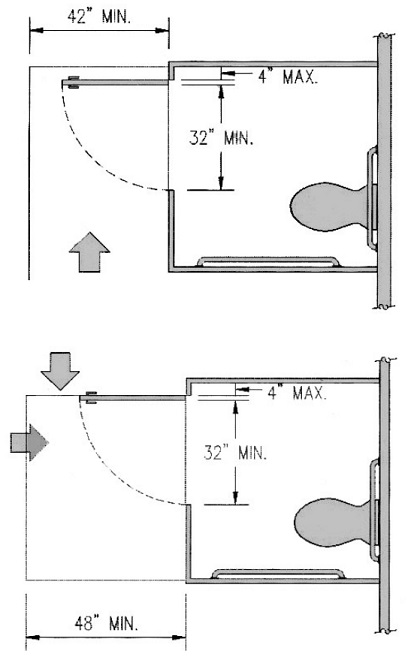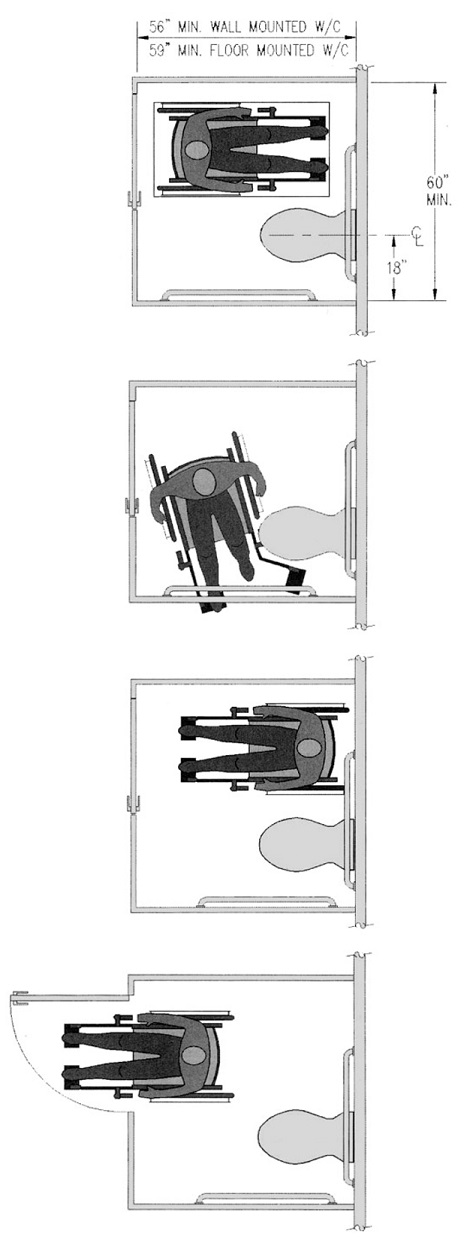Standard Stall
Stall doors are required to comply with 4.13 although alternate maneuvering dimensions are permitted. The clearances required for stall doors are different than those specified for conventional passage doors and gates in 4.13.6 since partition doors are generally lighter and easier to open. Except for end-of-row stalls, doors must swing out due to the confined space within stalls (less clearance is required on the push side of doors). Recommendations: Spring loaded hinges or secondary door pulls on the hinge side are a good idea in making it easier to close the door. Stalls should be located and configured to allow forward or latch-side approaches which provide easier wheelchair access than hinge-side approaches.

Specifications in 4.13 require that hardware have a shape that is easy to grasp with one hand and that does not require tight grasping or pinching or twisting of the wrist to operate. For latches, consider slide bolts and similar hardware that does not require fine hand or finger movements.
The offset door/water closet configuration (which can be reversed) allows space for entry. Different people use different techniques in transferring from a wheelchair to the toilet seat. Toe clearance below partitions allows additional maneuvering space and permits a closer approach for perpendicular transfers. Toe space at least 9 inches high is required at the front and a side partition in stalls no more than 60 inches deep. Recommendation: Ceiling-mounted partitions are a good idea because toe clearance is not interrupted by vertical supports [sic]

Because floor-mounted toilets commonly project further from the back wall than wall-mounted toilets, the stall depth is increased when a floor-mounted toilet is used. This allows similar maneuvering space.
Clearance alongside a toilet allows space for a side transfer and cannot be obstructed. Note that turning space outside the stall is required in the room whether or not additional maneuvering room is provided in the stall. Out-swinging doors allow adequate clearance (push side) within the confined space of stalls. Keep in mind that ADAAG specifies the minimum requirements. Recommendations: Larger stalls, such as those sized to provide turning space wholly within partitions or end-of-row stalls, will provide easier access, particularly for people who use scooters or other motorized devices. Where floor drains are provided, they should be located or otherwise designed (trench drains) so that the floor surface in accessible stalls is level since slopes greater than 2% and drain openings can impede access.

User Comments/Questions
Add Comment/Question